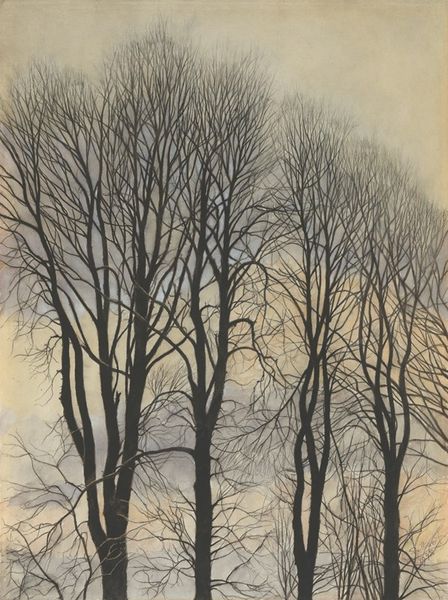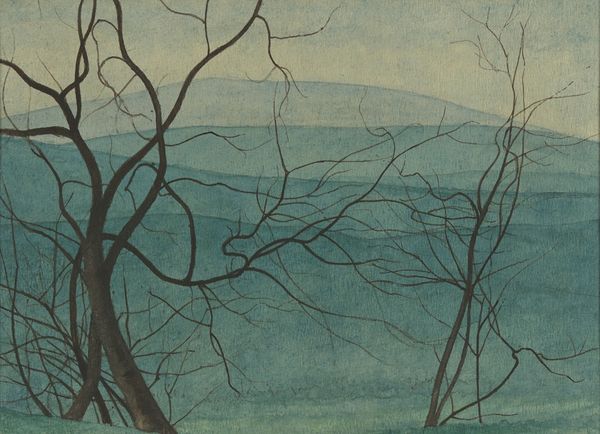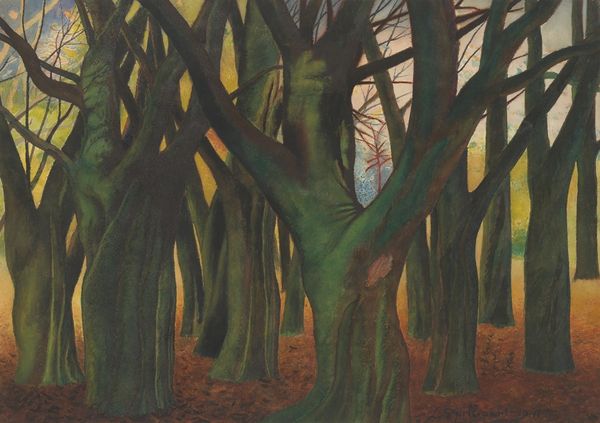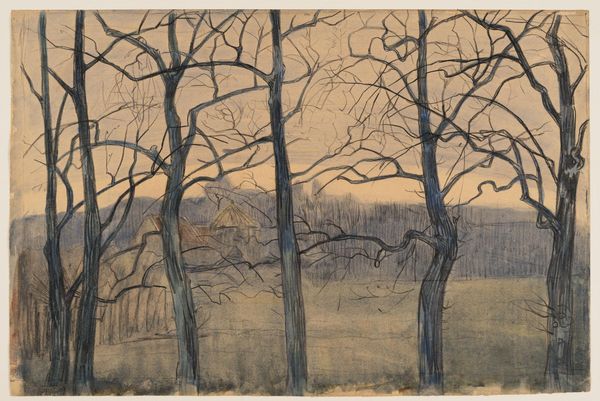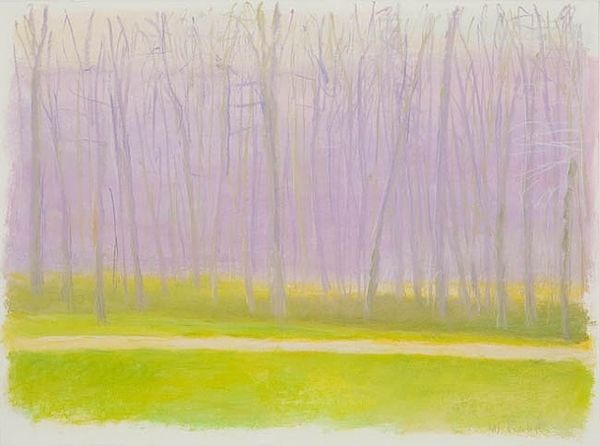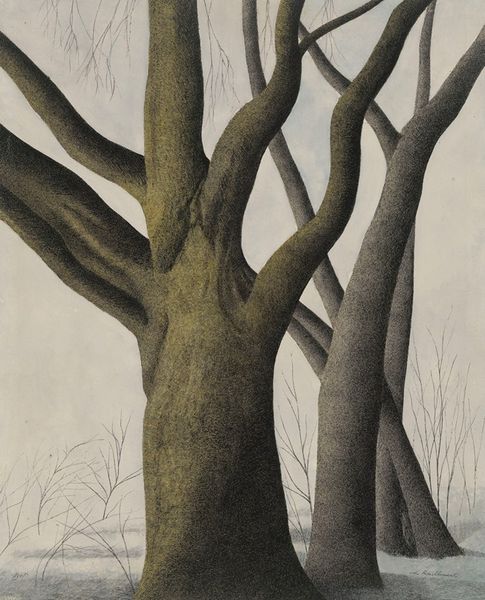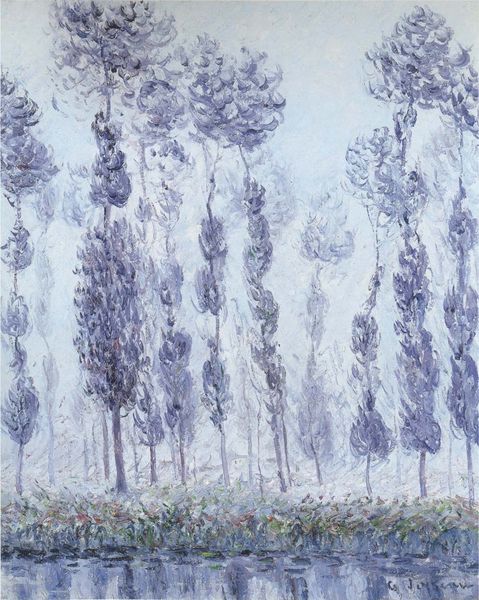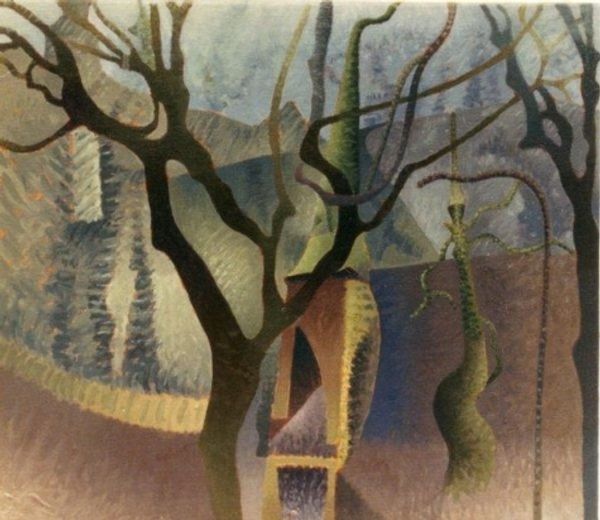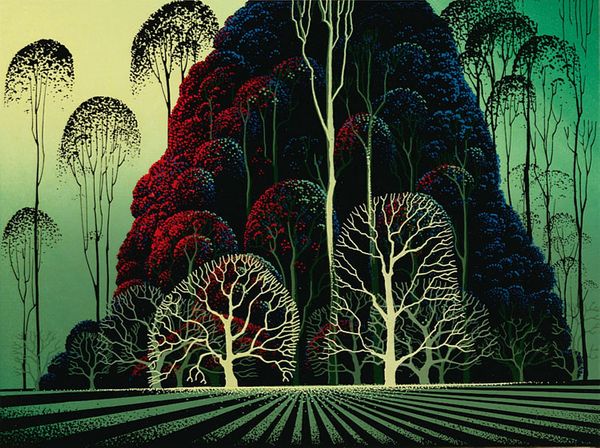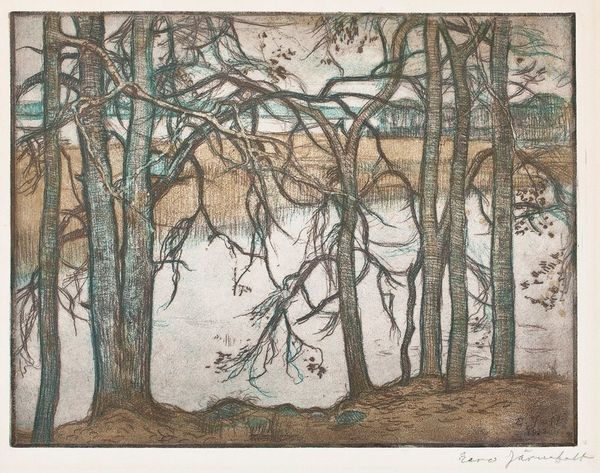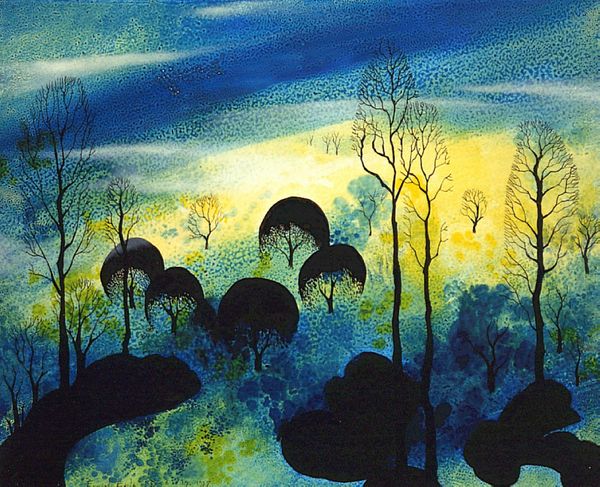
Copyright: Public domain
Curator: Looking at Jan Mankes' "Row of Trees" from 1915, made using watercolor and colored pencil, one is struck immediately by its melancholic stillness. What are your initial observations? Editor: It's incredibly somber, almost haunting. The subdued palette and skeletal trees create an atmosphere of quiet desolation. The hazy backdrop adds to that sense of melancholy. It feels as if a scene from a dream, or perhaps from the edge of a memory. Curator: Indeed. Mankes has deployed a very limited palette to convey depth, structure, and an overall flattening of the visual field. Consider how he repeats the vertical thrust of the trees against the subtly modulated sky. This repetition and the variation within repetition becomes the central motif, and offers an elegant, pared-down essence of the real. Editor: Mankes’s context is significant. He was working during the rise of modernism but remained firmly rooted in realism and traditional subject matter. His fragile health, coupled with the looming shadow of World War I, likely influenced the introspective mood so clearly represented here. Did his patrons appreciate the subdued reflection in such somber tones, at the time? Curator: Doubtlessly, it reflected an overall sensibility. This speaks to the artist's deep engagement with pictorial structure and reduction. The linear quality, achieved through precise use of watercolor, defines forms rather than relying on tonal variation. Consider the compositional technique and deployment of a single overarching hue to emphasize unity of composition, despite depth. It reduces the scene to its elemental form. Editor: Mankes managed to imbue his landscape with a human element without glorifying the common rural experience or any social message. In that era, as artistic and political upheaval took hold across Europe, a quiet watercolor such as this allowed a moment of contemplation, removed from the escalating conflict. It provides a quiet corner, where one can think or simply be. Curator: The artwork is an act of thoughtful reduction, the paring down to bare bones of feeling and structure. Editor: The historical context brings another layer to appreciate: the work represents the intersection of personal anxiety and broader societal precarity, manifested in these trees that almost breathe as they absorb every hue into their paper lungs. Curator: Precisely, an affective charge is expressed in these structurally elemental terms. Editor: An almost existential exploration of existence itself.
Comments
No comments
Be the first to comment and join the conversation on the ultimate creative platform.
